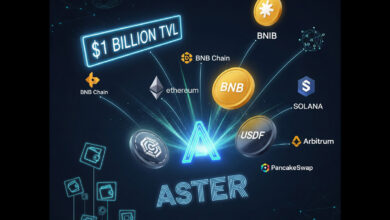Here’s how its booms and busts shaped history
Ethereum, the world’s second-largest cryptocurrency by market capitalization, is officially celebrating its tenth birthday — a major milestone in what has been a dynamic decade of technological breakthroughs, market cycles, and foundational shifts in decentralized finance. Over the past ten years, Ethereum has catalyzed entire sectors of the blockchain ecosystem and remains at the center of Web3 transformation. For the Contrarian Investor, Ethereum’s volatility is less of a deterrent and more of a map — one that outlines both risk and opportunity for those discerning enough to read it. Where mainstream narratives focus on fleeting hype or fear, savvy investors look for patterns, underlying market cycles, and strategic entry points that consistently outlive the noise.
Ethereum’s Transformational Milestones
To understand Ethereum’s enduring value, one must first examine the landmark events that redefined its role year after year. While Ethereum didn’t invent the smart contract, it brought the concept mainstream through an open, permissionless framework that scaled like no platform before it. When Ethereum officially launched in 2015, few could have imagined just how quickly it would evolve from an experimental blockchain into the global platform for decentralized application (dApp) development.
The 2017 Initial Coin Offering (ICO) boom, largely powered by the Ethereum protocol, was one of crypto’s first explosive wealth-generation events. With the launch of the ERC-20 standard, Ethereum became the de facto infrastructure layer for token issuance — allowing projects to easily deploy smart contracts and raise capital directly via their own tokens. Although much of this capital was eventually lost to scams and unsustainable business models, Ethereum’s underlying role as a decentralized coordination and fundraising mechanism remained untouched and paved the way for further innovation.
Later that same year, the emergence of CryptoKitties ushered in the era of digital collectibles. This seemingly simple blockchain game revealed the blockchain’s potential for representing digital ownership in a verifiable, immutable way. While it famously clogged the Ethereum network due to high demand, it was an early precursor to the Non-Fungible Token (NFT) revolution that would later explode in 2021.
Ethereum’s biggest structural revolution came in 2022 with The Merge — the much-anticipated transition from energy-intensive proof-of-work (PoW) consensus to environmentally aligned proof-of-stake (PoS). This switch not only decreased Ethereum’s energy consumption by over 99% but also helped align it more closely with environmental, social, and governance (ESG) narratives often emphasized by institutional investors. As we move toward greater regulatory clarity and the budding inclusion of crypto-based ETFs, Ethereum stands to gain significantly from increased institutional participation.
Ethereum as the Backbone of Crypto Markets
While Bitcoin is widely considered digital gold or a decentralized financial reserve, Ethereum offers something far broader in scope: a versatile platform for executing logic on-chain. Over time, Ethereum has emerged as the core infrastructure powering the burgeoning Web3 movement. This includes sectors like decentralized finance (DeFi), decentralized autonomous organizations (DAOs), on-chain voting mechanisms, gaming economies, and a multi-billion-dollar NFT market.
The protocol’s composability has allowed developers across the globe to work collaboratively and iteratively—building a vast ecosystem aligned with programmable money, decentralized coordination, and financial accessibility. Today, protocols such as Uniswap, Compound, Aave, and MakerDAO all function thanks to Ethereum’s general-purpose blockchain. This symbiosis keeps billions of dollars in capital flowing organically across the network.
Despite its triumphs, Ethereum has not evaded criticism. Network congestion, high gas fees, and complex upgrade rollouts have become recurring pain points. However, for vigilant investors, these limitations are not simply weaknesses — they are early indicators of untapped opportunity. Where some see bottlenecks, others envision blue oceans of innovation. This friction has given rise to a vibrant Layer-2 ecosystem that includes protocols like Arbitrum, Optimism, and zkSync. These scaling solutions are not just short-term fixes; they represent a long-term architectural evolution for Ethereum’s broader usability and user experience.
Diversification into Layer-2 scaling solutions opens a variety of asymmetric investment opportunities. Capitalizing early on these trends involves understanding how Ethereum’s modular future architecture could redistribute liquidity, improve throughput, and reinforce its long-term economic security model. For investors willing to do the research, Ethereum’s future isn’t limited to ETH alone—it includes the web of technologies orbiting and enhancing it.
Growing Pains: Ethereum’s Market Crashes and Resilient Bouncebacks
No innovation story is complete without setbacks — and Ethereum has had its fair share. The post-ICO bust from 2018 to early 2019 saw ETH drop from over $1,300 to under $100. Then came the COVID-induced market crash of March 2020, which saw Ethereum fall aggressively alongside global equities. More recently, after peaking near $4,900 in late 2021, Ethereum has endured prolonged corrections, enduring the harsh reset associated with the broader crypto bear market.
Yet, each correction wasn’t a signal to exit — it was a setup. Every major Ethereum downturn has historically presented undervalued buy zones that preceded enormous rallies. Ethereum rewarded those who zoomed out and studied historical market structure. From market bottoms in 2018 to new all-time highs in 2021, the returns have consistently favored contrarian positioning.
From a fundamentals perspective, Ethereum has only improved. Developer retention remains among the highest across any blockchain ecosystem. Vital infrastructure like Infura, MetaMask, and Ethers.js has grown in tandem. And Ethereum’s market share of total-value-locked (TVL) across DeFi platforms remains dominant. Layer-1 competitors come and go, but none have achieved Ethereum’s consistent lead in developer mindshare, dApp activity, or protocol liquidity.
Strategic Investing: Learning from Ethereum’s Market History
The lessons Ethereum teaches go far beyond technicals or trends. There is a macro perspective that savvy investors embrace, viewing Ethereum’s past decade as a case study in patience, timing, and conviction. Similar to the internet’s early years, Ethereum has traversed speculative bubbles, regulatory gray zones, and scaling limitations — all while expanding its global developer and user base.
Ethereum investors who performed best over the last decade weren’t the ones chasing hype; they were the ones tracking GitHub commit rates, analyzing gas fee trends, staking participation, and Layer-2 integrations. They were positioning capital in accordance with Ethereum’s long-term utility — not its short-term fame.
Key modern pillars like protocol-level staking, introduced through Ethereum 2.0, and EIP-1559—which programmatically burns a portion of transaction fees—have shifted Ethereum from inflationary to deflationary economics during periods of high network usage. Meanwhile, developments like restaking (facilitated by protocols such as EigenLayer) hint at new layers of yield and security alignment in the Ethereum economy.
Educated investors know that Ethereum’s next breakout will likely stem not from social media euphoria but from sustained development, real-world integrations, and network usage metrics that beat prior benchmarks. Understanding Ethereum’s market history is no longer just smart — it’s strategic alpha.
Ethereum Forward: The Next Decade of Growth
Looking ahead, Ethereum is positioning itself to become far more than just a dApp host or programmable chain — it aims to become global financial infrastructure. Several key narratives will shape this evolution. First, the rise of tokenized real-world assets (RWAs) such as stocks, bonds, and real estate being digitized for DeFi liquidity. Second, the fusion with traditional finance (TradFi) where banks and fintechs begin leveraging Ethereum’s settlement layers to process real-time payments via Web3 wallets.
In addition, global regulatory trends, including the development of Central Bank Digital Currencies (CBDCs), are opening the door for Ethereum to function as public infrastructure for national digital currencies. As government and institutional participants enter the arena, Ethereum stands to benefit from increased transaction volumes and utility-driven demand for ETH as gas and collateral.
Notably, the Layer-2 renaissance is accelerating. Projects like Base, Scroll, and Starknet are not merely scaling Ethereum—they’re decentralizing compute, reducing costs, and broadening Ethereum’s accessibility to millions of new users and developers. ETH, as the native gas and security token bridging these platforms, could see renewed demand in parallel with adoption curves.
By 2030, Ethereum could be the invisible economic layer powering credentials, commerce, identity management, intellectual property, and global supply chains. And unlike speculation-driven narratives of the past, this future is grounded in product-market fit, operational revenue, and vibrant developer ecosystems.
Conclusion: A Decade Later, Ethereum Still Leads the Way
As Ethereum enters its second decade, one crucial lesson emerges: longevity is Ethereum’s superpower. Not just in terms of market presence, but in its sustained relevance and iterative innovation. Despite a crowded field of Layer-1 competitors and an ever-changing investor landscape, Ethereum continues to be a resilient, ever-evolving asset. It is not merely surviving — it is transforming into a foundational layer of the digital economy.
For long-term investors willing to go beyond the headlines and dig into protocol-level fundamentals, Ethereum remains one of the most compelling asymmetric bets of the
Source link





